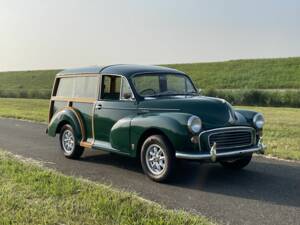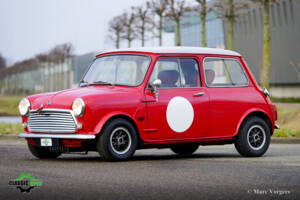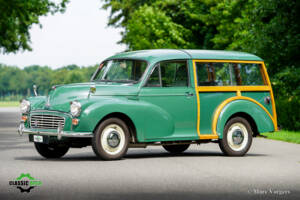- Voiture
- Morris (33 offres)
Morris Classic Cars for Sale
The Morris Motor Company stands for simple, practical British engineering, with its biggest success found in the Minor and Mini series. The models span from the pioneering Bullnose Oxford to versatile Minors and the agile, revolutionary Minis. Renowned for robust mechanics, exceptional parts availability, and broad body styles, Morris classics are sought after by enthusiasts and new collectors alike for their genuine British automotive heritage.
Résultats de la recherche

1969 | Morris Minor 1000 Traveller
Morris Minor 1000 Traveller | 1969 | Route 66 Auctions - For sale by auction. Estimate 7500 EUR
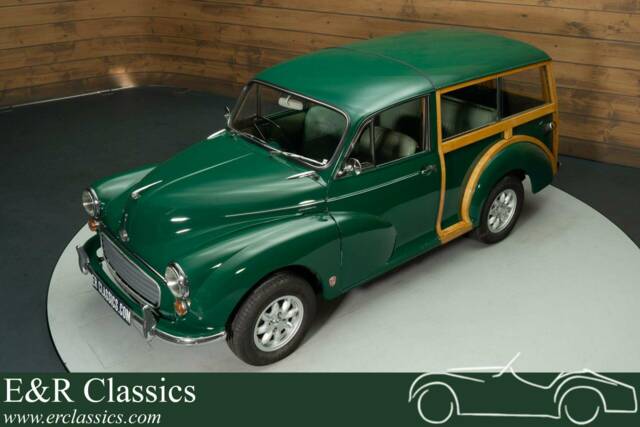
1969 | Morris Minor 1000 Traveller
Oldtimer Morris Minor
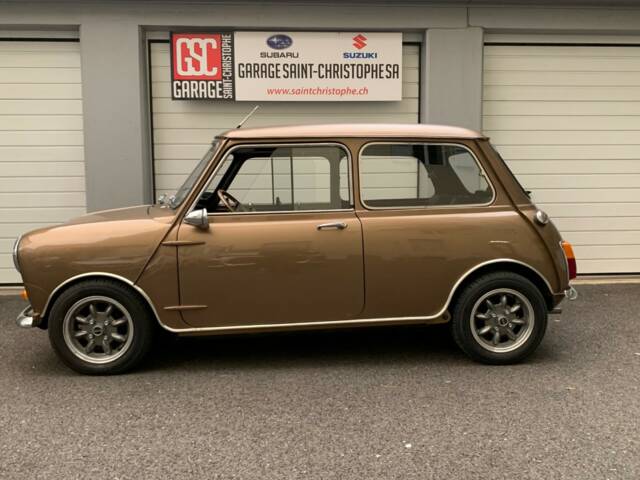
1969 | Morris Mini Cooper 1000
1ère immatriculation 1971
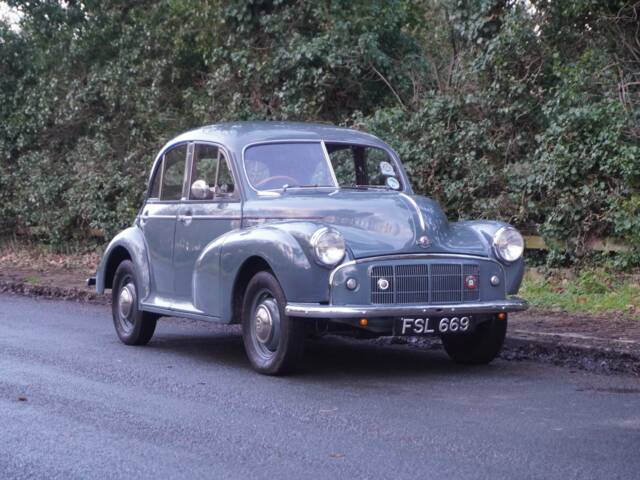
1952 | Morris Minor MM
1952 Morris Minor Series MM


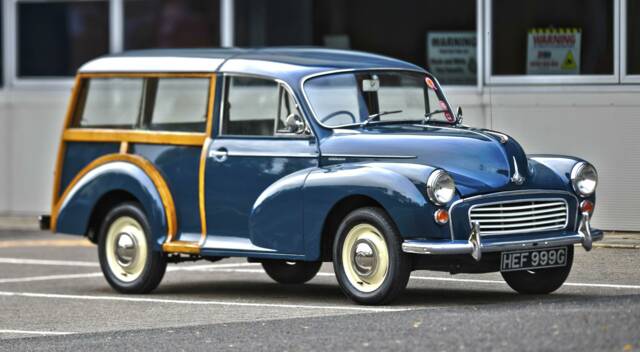
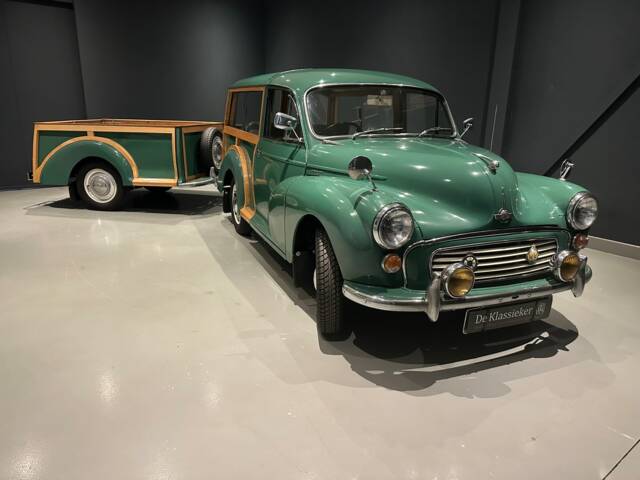
1964 | Morris Minor 1000 Traveller
Unique Morris Minor Traveler with matching luggage cart
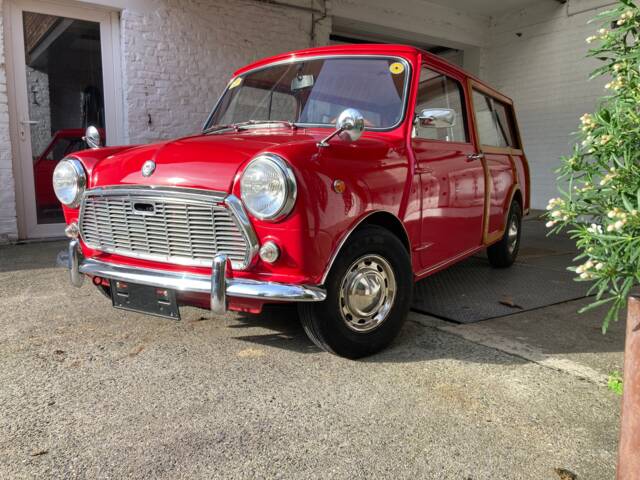
1968 | Morris Mini Traveller
TRAVELLER "WOODY"
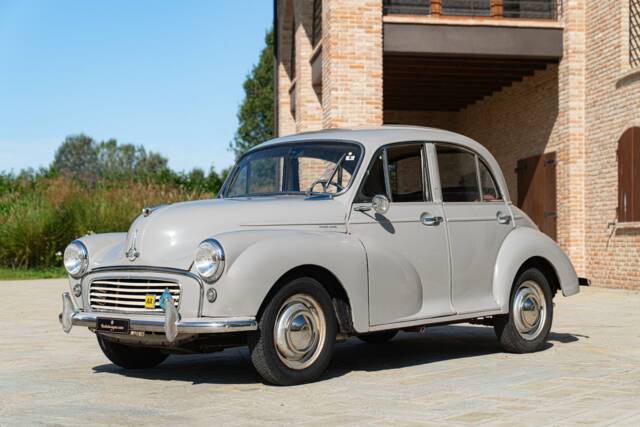
1958 | Morris Minor 1000
2024-11-27 08:26:01 | Morris MINOR
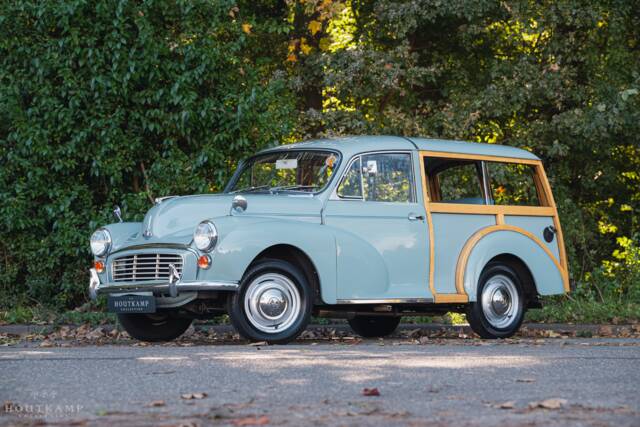
1968 | Morris Minor 1000 Traveller
Completely nut and bolt restored, fully documented by the well known magazine Practical Classics
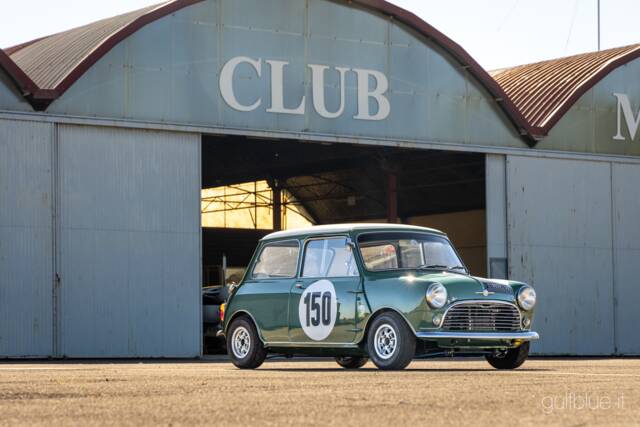
1965 | Morris Mini Cooper S 1275
Important racing history, sold new in Italy, fully original, 117hp engine, valid HTP, roll cage and safety equipment available

1967 | Morris Minor 1000
Morris MORRIS MINOR 1000
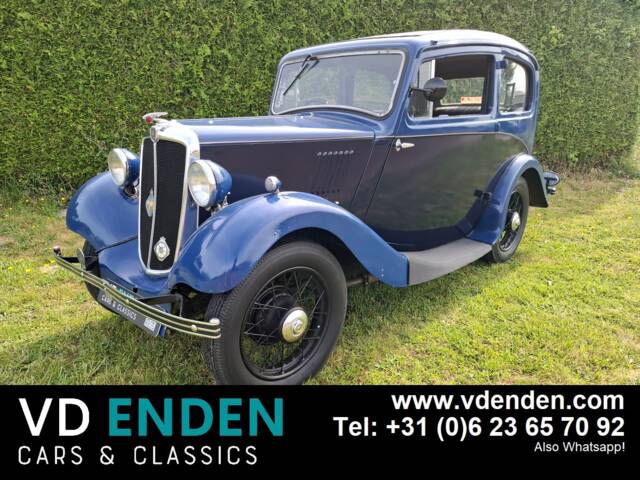
1935 | Morris Eight
Sliding Head - needs love and care..
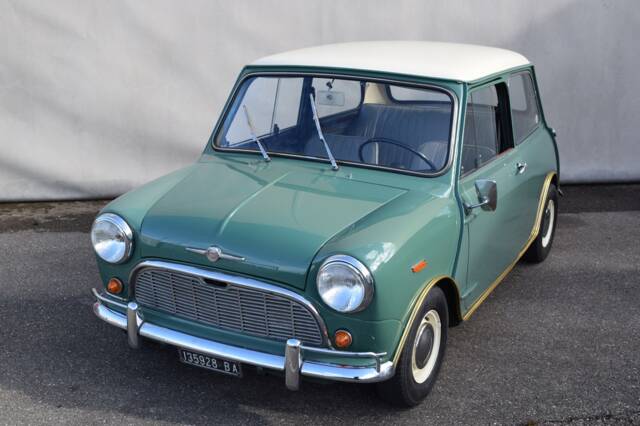
VAT is reclaimable
History of Morris
Founded in 1910 by bicycle manufacturer William Richard Morris in Oxford, the Morris Motor Company began as a cycle producer before shifting to car manufacturing in 1913. The first Morris Oxford (Bullnose) quickly gained a foothold in the British market. By 1925, it accounted for 45% of all UK car sales, largely thanks to the adoption of Ford-like mass production. Morris produced a variety of models, including the Cowley and Minor, and expanded globally, from India to Australia. The post-war era saw its most successful model, the Morris Minor, roll out in 1948, cementing Morris as a symbol of British everyday motoring. In 1952, Morris merged with Austin to form the British Motor Corporation, and later British Leyland, with Morris-branded vehicles produced until the mid-1980s.
Model History
The first notable Morris, the Bullnose Oxford (1913–1926), was succeeded by the Cowley and a range of small and medium cars. The Minor, introduced in 1928 and reborn post-war in 1948, marked a turning point, becoming Britain's first car to sell over a million units. Other key models include the versatile Morris Mini (from 1959), the Eight, Ten, Oxford, Isis, and the Ital (1980–1984). The Minor was offered as a saloon, Tourer (cabriolet), Traveller (estate with an ash frame), van, and pick-up, allowing Morris to meet a variety of needs from family to commercial. The Mini introduced front-wheel drive and a transverse engine layout, revolutionising compact car design and dominating rally stages in the Cooper S variants. Model development often featured badge engineering, where near-identical cars appeared under various BMC marques.
Highlights and Unique Features
Morris cars are distinguished by a combination of straightforward engineering and practicality. The Minor exemplifies low running costs, a surprisingly spacious and robust monocoque body, and easily accessible mechanics. The Traveller's visible ash wood frame and split rear doors make it distinctive among estates. The Mini's layout provided unmatched interior space for its size and formed the blueprint for generations of compact cars. Club scenes around Minors and Minis are lively due to easy maintenance, ample spare parts, and broad international export. Early Minors, with their split screens and semaphore indicators, are particularly cherished for their period charm. Later Minors and Minis benefited from updated lighting and more potent A-Series engines, while commercial van and pick-up versions met the needs of tradespeople and the Royal Mail alike.
Technical Data
Special Editions and Collectible Models
Standout special editions include the 'Minor 1,000,000', produced to mark the millionth Minor, and various limited-run Cooper and Cooper S Mini models, which achieved motorsport acclaim (especially at Monte Carlo). Australian, South African, and export market cars often feature unique body or trim details. The 'Woody' Traveller is a favourite among collectors for its craftsmanship and utility. Early Bullnose Oxfords and pre-war sports Minors are now rare and keenly collected.
Performance, Engine and Handling
Morris Minors were engineered for reliability and ease of use rather than outright speed, with typical top speeds ranging from 103 km/h (early models) to 124 km/h (1098cc versions). The handling, by 1950s standards, is lively and predictable, supported by independent front suspension and rack-and-pinion steering. The Minor's compact turning circle and low running costs make it popular for daily classic use. The Mini, thanks to its front-wheel-drive setup, offered a dynamic edge in its class, exemplified by the pace and agility of the Cooper S cars in rally competition. Commercial versions stand out for their stronger rear leaf springs and differentials, adapted for heavier loads. - Morris Minor (all years, especially Series III and Traveller): Best parts support, easy maintenance, variety of engines and body styles.
- Mini Cooper S (various capacities): Motorsport pedigree, sought after for performance and historical relevance.
- Morris Oxford (Bullnose and Flatnose): Pioneering design for the marque, early collectible value.
- Morris Eight: Basic, sturdy engineering; ideal starter pre-war British classic.
- Morris Ital: Represents the marque's last evolution under Leyland influence.
Interior, Comfort, Exterior and Design
Morris cars embraced functional, uncomplicated design with British restraint. The Minor is known for its flowing wings, minimal chrome, centrally mounted speedometer, and wide colour palette (including BRG, maroon, and blue). The Traveller features a visible varnished ash frame, while the Tourer and saloon models use practical, airy interiors with space for up to five. Vinyl, cloth, and leather upholstery varied by era and market. Strong period features include the split windscreen (early Minor models), semaphore or flashing indicators, oval dashboard dials, and practical seats. Designer Alec Issigonis’s hand is evident in both the Minor and Mini, with the latter's creative use of space, transverse engine, and stubby exterior proportions. Factory and period accessories range from external sun visors to full-length fabric sunroofs, central fog lamps, and even custom radio units.
Other Information
For newcomers, there is excellent club and community support: the Morris Minor Owners Club, Morris Register, and numerous Mini-focused groups in the UK and worldwide. The wide availability of documentation, maintenance handbooks, and body or woodwork specialists simplifies restoration. The original cow logo was a tribute to Oxford, Morris’s home city, still seen on preserved examples. Thanks to British 'badge engineering', Morris variants appeared under Austin, Riley, and MG brands, often differing only in trim or minor technical aspects.
Summary
Morris classics offer a breadth of body styles, robust mechanicals, and a warm welcome in the British classic car scene. With the enduring appeal of the Minor and Mini—reflected clearly in current market interest—plus excellent spare parts support and community backing, Morris makes an ideal entry into classic British motoring. From the practical Traveller to the agile Mini Cooper S, each Morris offers a tangible link to a distinct era of British manufacturing and design.
